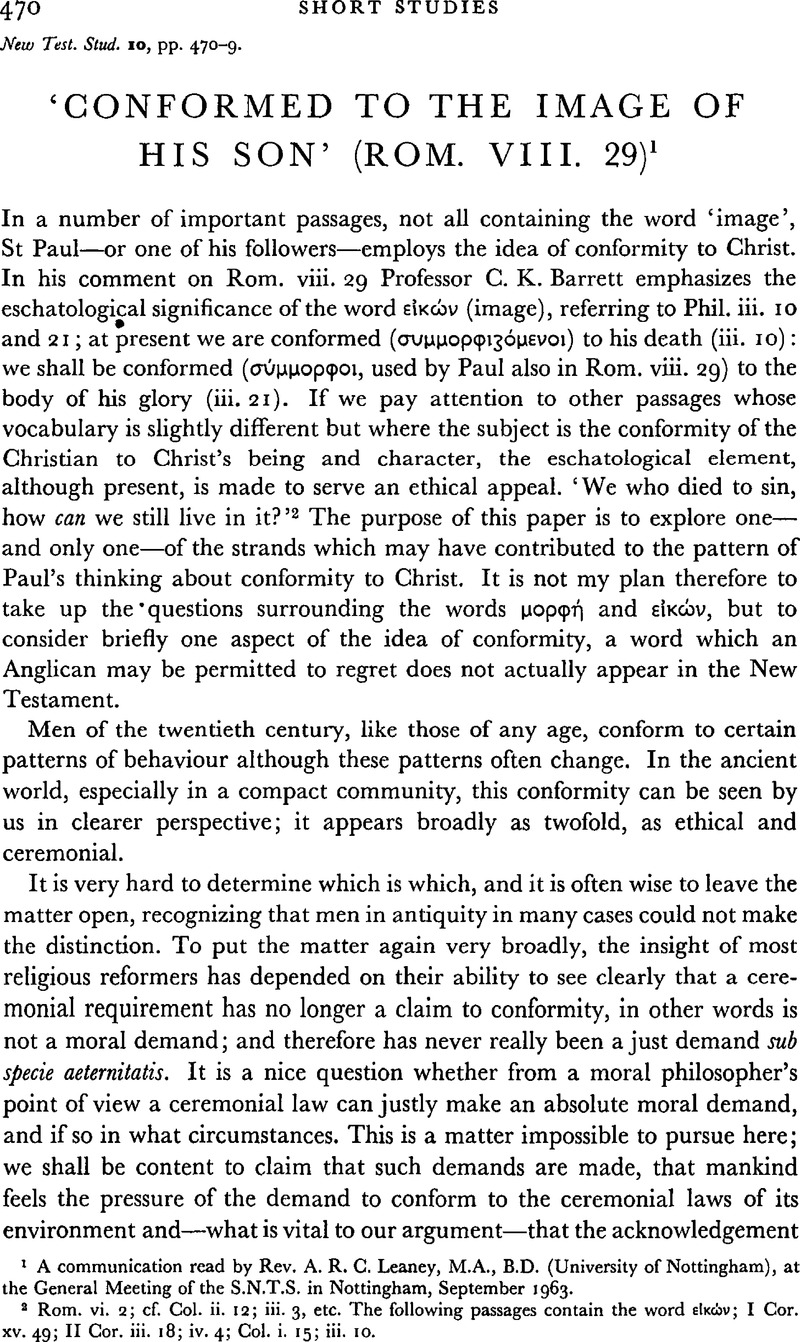No CrossRef data available.
Article contents
‘Conformed to the Image of His Son’ (Rom. viii. 29)1
Published online by Cambridge University Press: 05 February 2009
Abstract

- Type
- Short Studies
- Information
- Copyright
- Copyright © Cambridge University Press 1964
References
page 470 note 2 Rom. vi. 2; cf. Col. ii. 12; iii. 3, etc. The following passages contain the word είκών; I Cor. xv. 49; II Cor. iii. 18; iv. 4; Col. i. 15; iii. 10.
page 472 note 1 Kirk, and Raven, , The Presocratic Philosophers, no. 163.Google Scholar
page 473 note 2 Op. cit. pp. 9, 95 ff., 158 ff., 200, 205 ff., 360.Google Scholar
page 473 note 1 Op. cit. p. 228.Google Scholar
page 473 note 2 Plato, Gorgias (Oxford, 1959), p. 338.Google Scholar
page 475 note 1 The Scroll of the War of the Sons of Light against the Sons of Darkness (Oxford, 1962), p. 47.Google Scholar
page 475 note 2 Op. cit. pp. 134 ff.Google Scholar
page 478 note 1 Lev. xxv. 1–7; Jos. Ant. XI. 8.6; XIII. 8.1; XIV. 10.6; XIV. 16.2; XV. 1.2.; I Macc. vi. 49, 53; Tac. Hist. v. 4; M. San. v. 1; B. M. ix. 10.
page 478 note 2 The quotation of Isa. lxi. 1 f. at Luke iv. 18f. may be part of a sermon based on the scriptures read at the beginning of Tishri: Isa. lxi. 2 ff. is the haphtorah for the sabbath after Rosh Hashanah (New Year) and Shemittah was proclaimed on Tishri to (Day of Atonement). The ideas of release and renewal and of the return of God's favour were abroad at such a season and the Lord's words are extremely apt for it, although his claim goes beyond the immediate time. I am indebted to the Rev. C. H. Cave for this information who in an unpublished paper shows that all the scriptures recalled by Luke iv. 16 ff. are drawn from readings for the last half of Tishri and the first of Heshvan, i.e. the weeks following Rosh Hashanah and Yom Kippur.
page 478 note 3 ‘The Righteous Community in St Paul' to be published in the Berichtsband über den Oxforder Neutestamentler-Kongress 1961.Google Scholar


